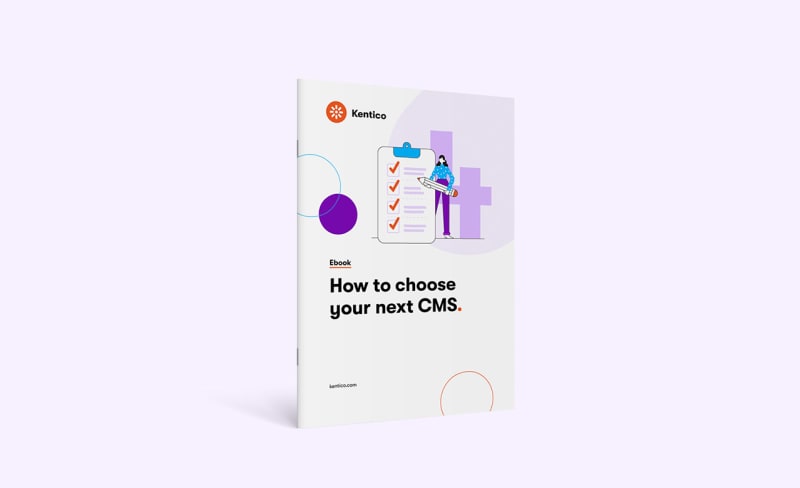Return on Investment (ROI) is like the North Star for decision-makers. It guides them through the labyrinth of choices, investments, and strategies. But what exactly is ROI in the context of a content management system (CMS) or digital experience platform (DXP)? In this article, we reveal why ROI is not just about dollars and cents; but understanding where the true value of your investment lies.
ROI is a fundamental financial metric used to assess the profitability and efficiency of an investment. Its calculation involves dividing the Net Profit (the earnings derived from the investment after deducting all associated costs and expenses) by the initial Cost of Investment.
ROI = (Net Profit / Cost of Investment) x 100
In essence, the higher the ROI, the more lucrative the investment. How very tidy. A simple number that clearly shows just what clever decision-makers we are. That should make it very easy to judge how good an investment our new content management solution or digital experience platform is... Net Profit / Cost of Investment x 100.
Except, of course, we all know it’s not that tidy. And anything but simple.
In the complex world of digital experience software, ROI is about more than just numbers. Of course, those things are still important. But there are also some not-so-obvious but critical things your solution is bringing you that are not part of a tidy number.
In a series of recent interviews with our clients (directors or managers), we asked about their perceptions of ROI in the context of a digital experience platform. All interviewees saw ROI through the lens of the benefits the solution brings rather than a number.
So, let’s first tick off the key candidates for DXP ROI assessment, all of which still deserve their place on the board, and then let’s explore elements that are not usually at the top of a decision-makers' assessment criteria but perhaps should be...
Top candidates for ROI assessment when choosing a DXP
To uncover the ROI potential of a DXP, a clear set of important signs and measurements comes into play, acting as a guide to help organizations make smart ROI decisions.
Here are the usual suspects:
- Increased revenue: This may come from increased sales, enhanced user experiences, or more efficient sales and marketing processes driven by the platform.
- Cost savings: Cost savings in terms of reduced licensing fees, fewer integrations, and lower maintenance and operational costs are clear signs of ROI.
- Faster time to market: A DXP that facilitates faster development and time-to-market can capture opportunities more swiftly, impacting ROI through quicker product launches and updates.
- Conversion rates: An increase in conversion rates, whether related to e-commerce sales, lead generation, or other KPIs, is a strong indicator of ROI and directly translates to financial gains driven by the solution.
- Customer satisfaction and loyalty: These can lead to higher lifetime customer value, repeat business, and referrals, all of which enhance ROI over time.
- Data-driven insights: A DXP that provides actionable data, analytics, and insights for optimizing marketing efforts, content creation, customer experiences, and strategies directly impact ROI.
10 intangible ROI-boosting benefits of your DXP
Intangible ROI, often referred to as "soft" ROI, encompasses the non-financial, qualitative benefits that a company gains from an investment. These benefits are more challenging to measure in monetary terms but are essential for the overall success and growth of the business.
Intangible ROI includes factors such as improved brand reputation, increased customer satisfaction, enhanced employee morale, greater market share, and better competitiveness. While these benefits may not have a direct dollar value attached to them and therefore cannot contribute towards a tidy number, they play a vital role in shaping the long-term success and sustainability of an organization.
Let’s explore them now.
- Predictable costs: Transparent and predictable license costs lead to better financial planning and prevent unexpected expenses that can erode your ROI over time e.g., discovering that features you need aren’t included in your license and having to pay for additional services or plugins to get the functionality you require.
- Consolidation: A DXP that consolidates multiple digital experience tools (e.g., email marketing, content management, personalization, SEO, etc.) into a single solution streamlines operations while significantly reducing software licensing and integration costs, as well as the complexity of managing and maintaining so many individual tools. Built-in email marketing features, for example, will result in significant savings and A/B testing can lead to better conversion rates and increased ROI.
- Composability: Composable DXPs empower organizations to build customized solutions by selecting specific modules and features that align with their unique needs. This approach ensures they only pay for the functionalities they require, preventing overprovision and unnecessary expense, thus optimizing cost-effectiveness. Composability also fosters resource efficiency, as it allows for streamlined allocation of human and financial resources. Furthermore, it supports scalability, enabling the platform to adapt to evolving requirements without excessive expansion costs. Composability therefore enhances operational agility and positively impacts ROI through cost savings and revenue growth.
- Content centralization and repurposing: A DXP that facilitates content centralization and repurposing is a powerful ROI driver. Content centralization streamlines content management by housing all assets in one place, allowing for efficient digital content creation, editing, and distribution. The ability to repurpose content across various channels, such as web, mobile, and social media, enhances efficiency, extends content reach, and increases the ROI of each content item. When content is efficiently repurposed across multiple channels, it enhances visibility and engagement with the audience while ensuring consistent messaging and branding which can lead to increased customer retention and higher conversion rates. Moreover, it can also improve SEO and drive organic traffic, further contributing to ROI through reduced customer acquisition costs.
- Headless multichannel content delivery: Headless capabilities allow content to be separated from the presentation layer, enabling you to deliver consistent and relevant content across various platforms and devices, ensuring that the user experience remains cohesive and engaging. A fully headless CMS or DXP solution, however, is only suitable for certain business uses. A hybrid headless DXP will provide those headless capabilities as a feature that you apply to specific content cases, ensuring ultimate flexibility and retention of the benefits gained through ease of use (next section). By delivering content seamlessly across multiple channels and languages, with the flexibility of headless technology, you not only broaden your audience reach but also enhance the user experience, ultimately contributing to improved customer engagement, revenue, and ROI.
- Ease of use for marketers: Easy-to-use interfaces and intuitive UIs (where multiple tools can be managed from one place) empower marketers to manage content effectively and autonomously, while low-code, no-code tools allow them to create blog posts, new landing pages, lead-generating forms, and run campaigns that deliver personalized experiences without the help of developers. This reduces the need for training, increases adoption, and lowers labor costs, contributing to positive ROI. Enhanced marketing efficiency means quicker response to market changes, better customer engagement, and increased revenue, all of which improves ROI.
- Security and compliance: A secure platform does more than just protect your data, it also helps you follow important rules and laws, making sure you don't have costly security problems or legal issues that could hurt your profits. By keeping your data safe, a secure platform builds trust and a good reputation. This helps keep customers happy and makes your brand more valuable. When your digital system is secure, it shields you from online threats and legal problems, making your ROI more stable and better in the long run.
- Globalization and scalability: A platform that can easily grow with your organization leads to better financial results. Scalability means your digital system can handle more users, content, and traffic without costing a lot more money. You don't need big changes or investments as your business grows, so it stays cost-effective. Plus, it helps your organization take advantage of new opportunities and quickly adapt to market changes, which can bring in more money and make your finances stronger in the long run. Multilingual capabilities expand your market reach by enabling you to target global audiences in their preferred languages, potentially increasing revenue. Being able to grow without spending a lot more money is a big part of getting a better ROI with your digital system.
- A clear timeline and a roadmap: When a vendor shares their future plans openly and commits to incorporating the latest technologies, they’re laying a solid foundation for the future of your digital infrastructure. This approach ensures that your platform remains competitive and relevant in an ever-evolving landscape. It diminishes the risk of early obsolescence, safeguarding your long-term return on investment by positioning your business to adeptly adapt to emerging trends and technologies.
- Secure partnership and support: A secure partnership with an active and engaged partner network, coupled with a responsive support team, is invaluable. This support system ensures that issues are addressed promptly, optimizing your platform, and ensuring a seamless user experience. Higher efficiency and customer satisfaction translate to higher ROI.
Measuring and quantifying intangible ROI can be more complex and often involves assessing the impact of these factors on the company's overall performance and market positioning.
Unveiling the deeper dimensions of ROI
ROI is more than just a numbers game when it comes to choosing the right content management system or digital experience platform. While financial metrics like increased revenue and cost savings are crucial, there's a deeper layer to ROI that involves intangible benefits.
These intangible factors, such as improved brand reputation, marketer empowerment, and better scalability, play a significant role in shaping the long-term success of an organization.
As you explore the multifaceted world of CMS and DXP investments, it's essential to acknowledge the nuanced interplay of these elements and recognize their contribution to your investment's overall financial success.
Unlock in-depth advice for choosing the right CMS for your business in our free ebook, How to choose your next CMS.


